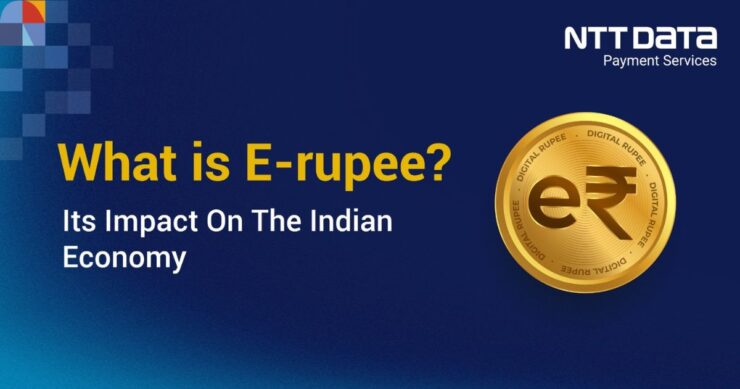
Table of Contents
The introduction of the e-rupee, India’s central bank digital currency (CBDC), has been a significant development in the country’s financial sector. In this blog, we will explore the significance of the e-rupee in the Indian economy, what it is, and its potential impact.
Significance of the e-rupee in the Indian Economy
The e-rupee, India’s CBDC, has the potential to play a transformative role in the country’s economy. As a digital version of the Indian rupee, the e-rupee can provide a secure, efficient, and accessible means of payment for individuals and businesses. This is particularly important in a country like India, where a significant portion of the population remains underserved by the traditional banking system.
What is e-rupee?
The e-rupee, or the electronic rupee, is a form of digital currency introduced by the Reserve Bank of India (RBI) in December 2022. It is a central bank digital currency (CBDC) that aims to complement the existing physical currency and provide a secure and efficient alternative for digital transactions.
It is designed to be a legal tender, like the physical rupee, but in a digital format. By providing a secure and regulated digital currency, the RBI aims to address the challenges associated with cash-based transactions, such as high transaction costs, limited accessibility, and the risk of counterfeiting.
Recent Web Stories
Impact of the e-rupee on the Indian Economy
The introduction of the e-rupee has the potential to have a significant impact on the Indian economy in several ways:
1. Financial Inclusion:
One of the primary objectives of the e-rupee is to enhance financial inclusion in India. By providing a digital form of the Indian rupee, the e-rupee can reach individuals and businesses that may not have access to traditional banking services, particularly in rural and remote areas. This can help to bridge the financial divide and enable more people to participate in the formal economy.
2. Reduced Costs:
The e-rupee can help to reduce the costs associated with the physical handling of cash, such as transportation, storage, and security. This can lead to cost savings for both businesses and the government, which can be passed on to consumers in the form of lower prices or improved services.
3. Increased Efficiency:
The e-rupee is designed to be a fast, secure, and efficient payment system. By leveraging digital technology, the e-rupee can enable near-instant transactions, reduce the time and effort required for settlement, and minimise the risk of errors or fraud. This can improve the overall efficiency of the payment ecosystem and contribute to broader economic growth.
4. Reduced Informality:
The e-rupee can help to reduce the size of the informal economy in India, which is estimated to be a significant portion of the overall economy. By providing a transparent and trackable digital payment system, the e-rupee can make it more difficult for individuals and businesses to engage in unrecorded or undeclared economic activities, potentially leading to increased tax revenues and improved economic planning.
5. Enhanced Security:
The e-rupee is designed with robust security features, including advanced encryption and authentication protocols, to protect against fraud and cyber threats. This can provide greater assurance to users and help to build trust in the digital payment ecosystem, which is crucial for its widespread adoption.
Secure Your Online Payments with NTT DATA Payment Services
As the e-rupee continues to gain traction in the Indian economy, it’s important for individuals and businesses to ensure the security of their online payments. NTT DATA Payment Services offers a range of solutions to help you securely manage your digital transactions.
NTT DATA Payment Services offers a complete payment solution to advance both your offline and online businesses from,
- Payment Gateway in India
- POS machines
- IVR payments
- Mobile applications, and
- Bharat QR Scan and Pay
We ensure maximum comfort, convenience, and safety for all your payments.
Conclusion
The introduction of e-rupee is a significant development in India. As a digital representation of the Indian rupee, the e-rupee has the potential to transform how people and businesses transact, enhance financial inclusion, reduce costs, and increase the efficiency of the payment system.
As the e-rupee rollout progresses, it is expected to have a far-reaching impact on the Indian economy, from reducing the size of the informal economy to enhancing the security of digital payments.
| Also, you can get frequent updates on nttdatapayments Instagram page. |
Frequently Asked Questions (FAQs)
1. What is e-rupee?
e-rupee is India’s central bank digital currency (CBDC), which was introduced by the Reserve Bank of India (RBI). It is a digital representation of the Indian rupee aimed at complementing the existing physical currency and providing a secure and efficient alternative for digital transactions.
2. When was the e-rupee launched?
The e-rupee was launched by the RBI in December 2022 as part of a phased rollout plan. The initial phase focused on the wholesale segment, with plans to expand to the retail segment in the near future.
3. How is the e-rupee different from cryptocurrencies?
The e-rupee is a central bank digital currency, meaning it is issued and controlled by the Reserve Bank of India, unlike cryptocurrencies, which are decentralised and not issued by a central authority.
4. How can the e-rupee impact financial inclusion in India?
By providing a digital form of the Indian rupee, the e-rupee can reach individuals and businesses that may not have access to traditional banking services, particularly in rural and remote areas. This can help bridge the financial divide and enable more people to participate in the formal economy.
5. How can the e-rupee help reduce the informal economy in India?
The e-rupee’s transparent and trackable nature can make it more difficult for individuals and businesses to engage in unrecorded or undeclared economic activities. This can potentially lead to increased tax revenues and improved economic planning.
6. What security features are in place to protect the e-rupee?
The e-rupee is designed with robust security features, including advanced encryption and authentication protocols, to protect against fraud and cyber threats. This can provide greater assurance to users and help build trust in the digital payment ecosystem.







